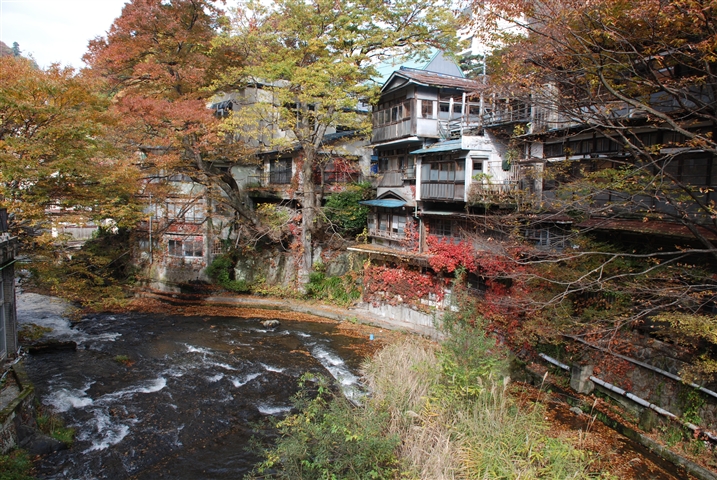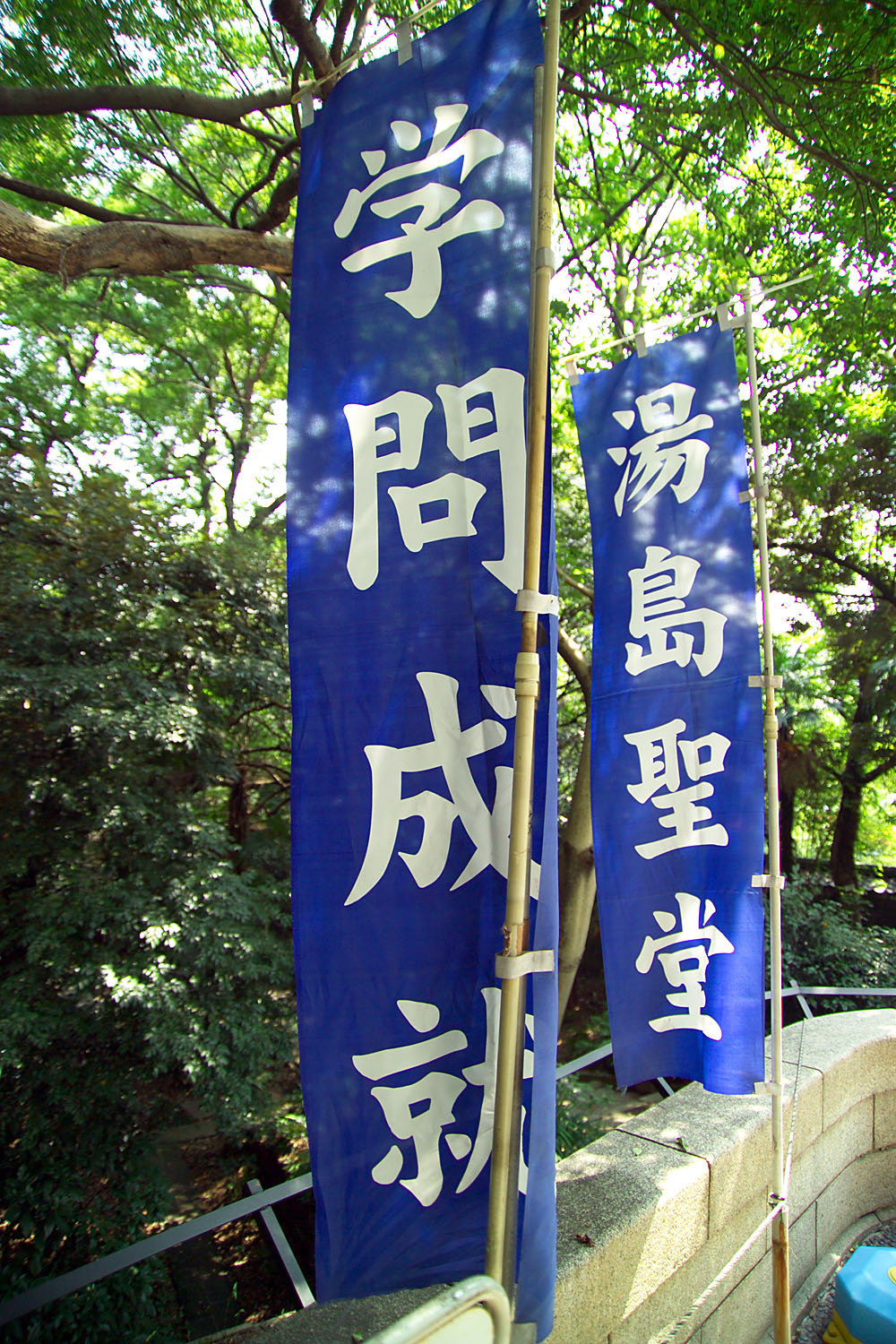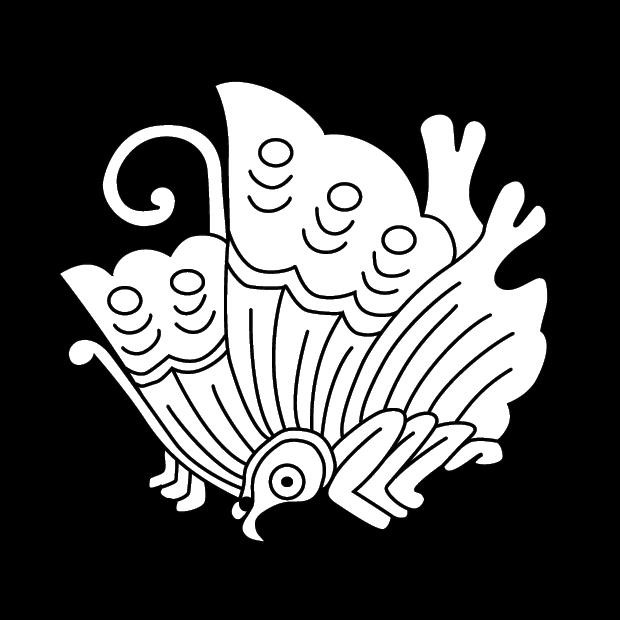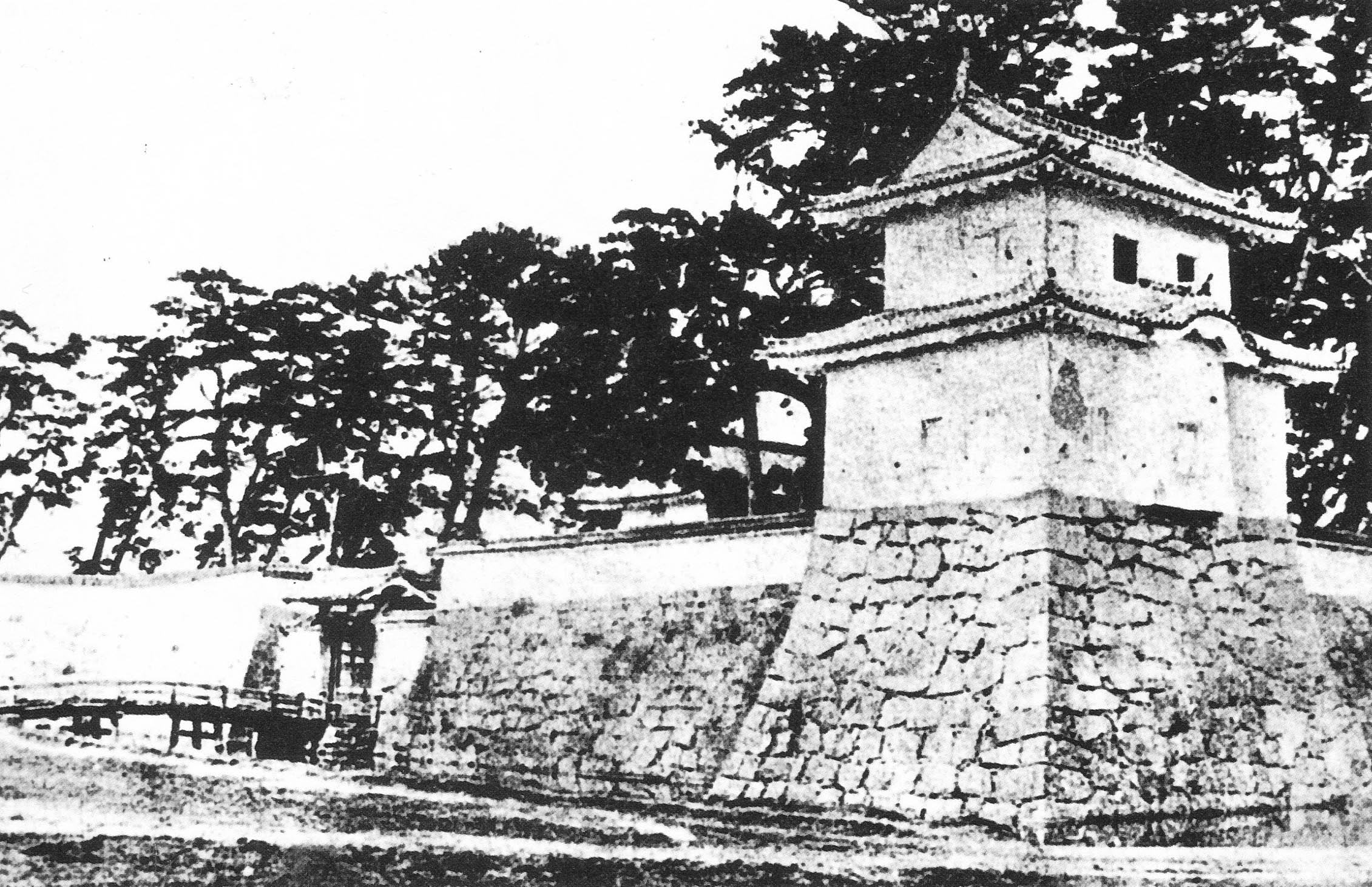|
Yamaga Sokō
was a Japanese military writer and philosopher under the Tokugawa shogunate of Edo period in Japan. As a scholar he applied the Confucian idea of the "superior man" to the samurai class of Japan. This became an important part of the samurai way of life and code of conduct. Biography Yamaga was born in Aizuwakamatsu the son of a ''rōnin'' formerly of Aizu Domain and moved to Edo at the age of six in 1628. He had been studying the Chinese classics from that time, and at the age of nine became a student of Hayashi Razan, a follower of Neo-Confucianism who had developed a practical blending of Shinto and Confucian beliefs and practices which became the foundation for the dominant ideology of the Tokugawa shogunate.Nussbaum, Louis Frédéric ''et al.'' (2005). "Yamaga Sokō" in ; n.b., Louis-Frédéric is pseudonym of Louis-Frédéric Nussbaum, ''see'Deutsche Nationalbibliothek Authority File. At the age of 15, he travelled to Kai Province to study military strategy under Obata K ... [...More Info...] [...Related Items...] OR: [Wikipedia] [Google] [Baidu] |
Aizuwakamatsu
is a city in Fukushima Prefecture, Japan. , the city had an estimated population of 118,159 in 50,365 households, and a population density of 310 persons per km2. The total area of the city was . History The area of present-day Aizuwakamatsu was part of ancient Mutsu Province, and was settled from prehistoric times. The Aizu-Otsuka Kofun within the city borders dates from the 4th century AD, and is an Important Cultural Property. According to legend, in 88 BCE, Emperor Sujin sent two generals; Ohiko and Takenukawa-wake to the Tōhoku region for the purpose of establishing peace after the quashing of a rebellion in the region. Before the late 12th century, Aizuwakamatsu was mainly a market town and a base for regional warlords. Starting in 1192, Aizuwakamatsu became part of the regions that were controlled by the Kamakura shogunate. Soon after taking power, Yoritomo granted a samurai named Suwara Yoshitsura (from the Miura clan) all of Aizu. A descendant of Suwara, Ashin ... [...More Info...] [...Related Items...] OR: [Wikipedia] [Google] [Baidu] |
Hayashi Clan (Confucian Scholars)
The was a Japanese samurai clan which served as important advisors to the Tokugawa shōguns. Among members of the clan in powerful positions in the shogunate was its founder Hayashi Razan, who passed on his post as hereditary rector of the neo-Confucianist Shōhei-kō school to his son, Hayashi Gahō, who also passed it on to his son, Hayashi Hōkō; this line of descent continued until the end of Hayashi Gakusai's tenure in 1867. However, elements of the school carried on until 1888, when it was folded into the newly organized Tokyo University. Hayashi clan position The Hayashi family's special position as personal advisors to the shōgun gave their school an imprimatur of legitimacy that no other contemporary Confucian academy possessed.Yamshita, Samuel Hideo. "Yamasaki Ansai and Confucian School Relations, 1650–1675," ''Early Modern Japan.'' 9:2, 3–18 (Fall 2001). This meant that Hayashi views or interpretation were construed as dogma. Anyone challenging the Hayashi ... [...More Info...] [...Related Items...] OR: [Wikipedia] [Google] [Baidu] |
Matsudaira Sadanobu
was a Japanese ''daimyō'' of the mid-Edo period, famous for his financial reforms which saved the Shirakawa Domain, and similar reforms he undertook during his tenure as chief of the Tokugawa shogunate, from 1787 to 1793. Early life Matsudaira Sadanobu was the seventh son of Tokugawa Munetake, of the Tayasu branch of the Tokugawa clan. The Tayasu was one of the '' gosankyō'', the senior-most of the lesser cadet branches of the Shōgun's family, and was thus the grandson of the reform-minded eighth shōgun Tokugawa Yoshimune. The Tayasu house stood apart from the other cadet branches resident in Edo Castle, living a more austere lifestyle, following the example set by Yoshimune—in Munetake's words, the praise of manly spirit (''masuraoburi'') as opposed to feminine spirit (''taoyameburi''). It also set itself apart from the other branches due to its history of thwarted political ambition—the founder, Munetake, had hoped to become his father's heir but was passed over ... [...More Info...] [...Related Items...] OR: [Wikipedia] [Google] [Baidu] |
Daidōji Family
The Daidōji clan (大道寺氏) were a Japanese samurai kin group in the Kamakura period. Papinot, Jacques Edmond Joseph. (1906). ''Dictionnaire d’histoire et de géographie du Japon''; Papinot, (2003)"Daidōji," ''Nobiliare du Japon'', p. 4 retrieved 2013-5-3. History The Daidōji were descendants of the Taira. Daidōji Masashige was the governor of Suruga Province with an annual income of 180,000 ''koku''. In 1590, his forces were defeated by Maeda Toshiie. In 1591, Masahige killed himself ('' harakiri''). The Daidoji clan is one of the Japanese clans. Its origin is considered to be Daido-ji Temple of present Ujitawara-cho, Tsuzuki County, Kyoto Prefecture. The Daidoji family was believed to have moved to Senbon Shaka-do Temple of Kyoto. The Daidoji clan who had served the Owari domain was originally a vassal of the Gohojo clan. After the fall of the Hojo clan, Daidoji Shigenao, the second son of Daidōji Masashige who worked as the top at Kawagoe-jo Castle and ... [...More Info...] [...Related Items...] OR: [Wikipedia] [Google] [Baidu] |
Daidōji Yūzan
was a samurai and military strategist of Edo period Japan. He was born in Fushimi in Yamashiro Province (present-day Fushimi-ku, Kyoto). Among the works he wrote in his late years was the widely circulated , an introduction to warrior ethics that was influential among middle- and lower-class samurai. It has been translated into English by Arthur Lindsay Sadler as ''The Code of the Samurai'' (1941; 1988), William Scott Wilson as ''Budoshoshinshu: The Warrior's Primer'' and by Thomas Cleary.''The Code of the Samurai: A Modern Translation of the Bushido Shoshinshu of Taira Shigesuke'', translated by Thomas Cleary. . Yūzan was the son of Daidōji Shigehisa (大道寺繁久), the grandson of Daidōji Naoshige ( 大道寺直繁) and the great-grandson of Daidōji Masashige ( 大道寺政繁), an important advisor to the Later Hōjō clan. Shigehisa had been a samurai in the service of Matsudaira Tadateru, ''daimyō'' of the Echigo Takada fief, but became a ''rōnin'' in 1619 wh ... [...More Info...] [...Related Items...] OR: [Wikipedia] [Google] [Baidu] |
William Scott Wilson
William Scott Wilson (born 1944) is an American translator, author and historian known for translating several works of Japanese literature, mostly those relating to the martial tradition of that country. Wilson has brought historical Chinese and Japanese thought, philosophy, and tactics to the West in his translations of famous East Asian literature. Wilson's most notable translations include ''Hidden Leaves'' by Yamamoto Tsunetomo, which was featured in the film '' Ghost Dog: The Way of the Samurai'' (1999), ''The Book of Five Rings'' by Miyamoto Musashi, ''Taiko'' by Eiji Yoshikawa, and '' The Unfettered Mind'' by Takuan Sōhō. Early life Prior to his career as a translator, Wilson received a Bachelor of Arts degree in Political Science at Dartmouth College. In 1966, Wilson participated in a kayaking expedition from Shimonoseki to Tokyo and immediately began to appreciate Japanese culture. The following year, Wilson returned to Japan as a language teacher and lived i ... [...More Info...] [...Related Items...] OR: [Wikipedia] [Google] [Baidu] |
Ōishi Yoshio
24 April 1659 – 20 March 1703 was the chamberlain ('' karō'') of the Akō Domain in Harima Province (now Hyōgo Prefecture), Japan (1679 - 1701). He is known as the leader of the Forty-seven Rōnin in their 1703 vendetta and thus the hero of the '' Chūshingura''. He is often referred to by his pseudonym ('' kemyō''), . Biography He served ''daimyō'' Asano Naganori as the head chamberlain () for the Akō estate, supervising the daily running of the castle and the samurai. Due to the Tokugawa rules which required all the ''daimyō'' to spend every other year in Edo (now called Tokyo) the chamberlain was a very important man and the ''de facto'' ruler of the estate when the ''daimyō'' was away from his home province. Having attained this office at a rather young age, he is said to have had the implicit trust of his lord. When Asano committed seppuku as punishment for his failed attempt to kill Kira Yoshinaka in Edo castle and the Tokugawa shogunate abolished the ho ... [...More Info...] [...Related Items...] OR: [Wikipedia] [Google] [Baidu] |
Forty-seven Ronin
47 (forty-seven) is the natural number following 46 and preceding 48. It is a prime number. It is the adopted favorite number of Pomona College, a liberal arts college in Southern California, whose alumni have added cultural references to it in numerous places, including many ''Star Trek'' episodes. Mathematics 47 is a safe prime, a Thabit prime, a regular prime, a cluster prime In number theory, a cluster prime is a prime number such that every even positive integer ''k'' ≤ p − 3 can be written as the difference between two prime numbers not exceeding (). For example, the number 23 is a cluster prime becau ..., an isolated prime, a Ramanujan prime, and a Higgs prime. 47 is also a supersingular prime. It is the last consecutive prime number that divides the order of at least one sporadic group. In popular culture Pomona College Other Late rapper Capital Steez was infatuated with the number 47 and what it meant spiritually. He believed the number ... [...More Info...] [...Related Items...] OR: [Wikipedia] [Google] [Baidu] |
Military Science
Military science is the study of military processes, institutions, and behavior, along with the study of warfare, and the theory and application of organized coercive force. It is mainly focused on theory, method, and practice of producing military capability in a manner consistent with national defense policy. Military science serves to identify the strategic, political, economic, psychological, social, operational, technological, and tactical elements necessary to sustain relative advantage of military force; and to increase the likelihood and favorable outcomes of victory in peace or during a war. Military scientists include theorists, researchers, experimental scientists, applied scientists, designers, engineers, test technicians, and other military personnel. Military personnel obtain weapons, equipment, and training to achieve specific strategic goals. Military science is also used to establish enemy capability as part of technical intelligence. In military hi ... [...More Info...] [...Related Items...] OR: [Wikipedia] [Google] [Baidu] |
Asano Nagatomo
was a Japanese ''daimyō'' of the Edo period, who ruled the Akō Domain. He was the father of the famous Asano Naganori. References *''This article is derived from corresponding content on the Japanese Wikipedia''. 1643 births 1675 deaths Daimyo Asano clan {{daimyo-stub ... [...More Info...] [...Related Items...] OR: [Wikipedia] [Google] [Baidu] |
Harima Province
or Banshū (播州) was a province of Japan in the part of Honshū that is the southwestern part of present-day Hyōgo Prefecture. Harima bordered on Tajima, Tanba, Settsu, Bizen, and Mimasaka Provinces. Its capital was Himeji. During the Edo period of Japanese history, the Akō Domain (fief) was part of Harima. The Forty-seven ''rōnin'' were samurai of Akō han. IHI Corporation, a shipbuilder and major Boeing engine subcontractor gets its name from the province. History Harima Province was established in 7th century. During the Meiji Restoration, Himeji Prefecture was established with the whole area of Harima Province as the territory. Himeji Prefecture was renamed to Shikama prefecture, and Shikama Prefecture was transferred to Hyōgo Prefecture finally. Harima Sake Culture Tourism promotes the region as the "Hometown of Japanese Sake". Temples and shrines '' Iwa jinja'' was the chief Shinto shrine ('' ichinomiya'') of Harima. [...More Info...] [...Related Items...] OR: [Wikipedia] [Google] [Baidu] |
Akō Domain
was a Han (Japan), feudal domain under the Tokugawa shogunate of Edo period Japan, located in Harima Province in what is now the southwestern portion of modern-day Hyōgo Prefecture. It was centered around Akō Castle, which is located in what is now the city of Akō, Hyōgo. History During the Muromachi period, the area of Akō District, Hyogo, Akō District was under the control of the Akamatsu clan, the ''shugo'' of Harima Province. In the Sengoku period, it was part of the holdings of Ukita Hideie. During the Battle of Sekigahara, Ukita Hideie sided with the losing Western Army, and his territories were confiscated by the victorious Tokugawa Ieyasu, who awarded the area to his general and son-in-law Ikeda Terumasa. His vast holdings were broken up after his death, and his fifth son, Ikeda Masatsuna received a 35,000 ''koku'' portion which had been assigned as the widow's portion to his mother Tokuhime (Tokugawa), Tokuhime. This marked the start of Akō Domain. His younge ... [...More Info...] [...Related Items...] OR: [Wikipedia] [Google] [Baidu] |





